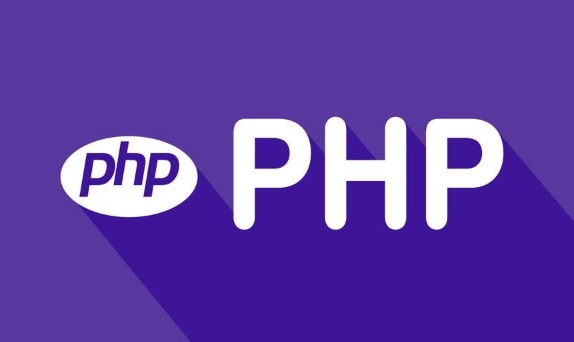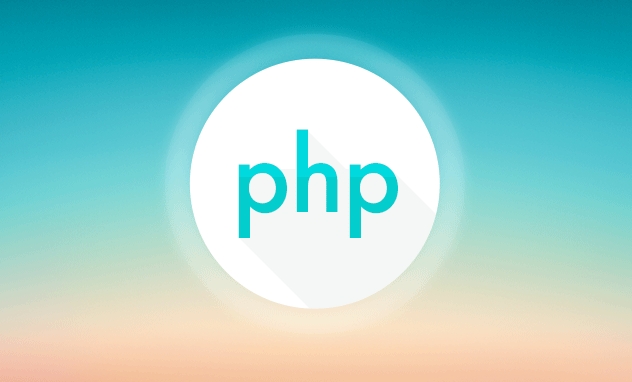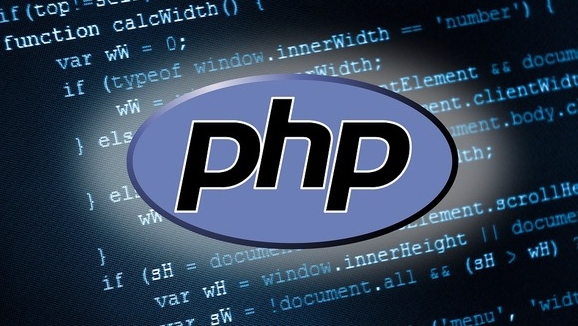The PHP framework selection should be determined based on project requirements and team familiarity. ① Different project types and different applicable frameworks: CMS choose Laravel or Symfony; Slim or Lumen for lightweight APIs; enterprise-level applications are preferred Laravel and Symfony; CodeIgniter and Slim for small projects or prototypes; Hyperf or EasySwoole is considered for high-concurrency systems. ② Evaluate the technology roadmap and clarify whether the project scale, development cycle and deployment environment match the framework. ③ Pay attention to community activity and document quality. For example, Laravel documentation is perfect, and the response to problems on Stack Overflow and GitHub also needs to be examined. ④ Team skills and existing resources affect the choice. If the team is familiar with a certain framework, it will continue to use more efficiently; the new team can choose a framework with low learning curve and rich information. ⑤ Also consider the compatibility of existing code bases and third-party components to ensure smooth integration. Framework is just a tool, and the optimal solution is the one that suits the project.

There is actually no need to worry too much about choosing a PHP framework. The key is to look at project requirements and team familiarity. If you are just starting out or have a small project, don't blindly pursue the "most popular" or "most functional" framework. First figure out what you want to do, and then match the appropriate tools.

Project type determines framework selection
Different types of projects are suitable for different frameworks. For example, if you are doing CMS (content management system), it may be more suitable for Laravel or Symfony because they are rich in ecosystems and many plug-ins; if it is a lightweight API service, Slim or Lumen may be more suitable.

- If it is an enterprise-level application: Laravel and Symfony are relatively safe choices
- If it's a small project or a rapid prototype: CodeIgniter, Slim is lighter
- If it is a high concurrency system: Swoole supports frameworks such as Hyperf or EasySwoole will have more advantages
It is recommended to draw a simple technical roadmap first, clarify the project scale, expected development cycle and deployment environment, and then consider whether the framework supports these conditions.
Look at community activity and document quality
Whether a framework is useful or not is not how well the official website says it, but whether it has mature community support and clear documentation. When you encounter a problem, it is very critical to find the answers on Stack Overflow, GitHub Issues, or forums.

For example, Laravel's documentation is almost the industry benchmark, with nearly every feature having detailed descriptions and sample code. Although some niche frameworks perform well, they have incomplete documentation and deserted communities, and it is difficult to solve once problems arise.
In addition, the update frequency can also reflect the vitality of a framework. You can go to GitHub to see if there has been continuous updates in the past six months and whether there are maintenance personnel to respond to problems.
Team skills and existing resources are also important
If your team is already familiar with a framework, there is no need to change the framework for "new technology". Both learning costs and time costs must be included. For example, if you have used Laravel for several projects before, it is a reasonable choice to continue using it for new projects.
On the contrary, if it is a new team with diverse members' backgrounds, you can choose a framework with a smooth learning curve and rich information. This is easy to train and is convenient for newcomers to get started.
In addition, consider whether the existing code base and third-party components are compatible. For example, if you have an ready-made database structure or microservice module, whether it can be integrated smoothly in the target framework will affect subsequent development efficiency.
Basically these are the points. The framework is just a tool. If you choose the right one, you will get twice the result with half the effort, but if you choose the wrong one, you will slow down the progress. Don’t just listen to other people’s recommendations, you have to make a judgment based on your actual situation.
The above is the detailed content of how to choose a php framework for a project. For more information, please follow other related articles on the PHP Chinese website!

Hot AI Tools

Undress AI Tool
Undress images for free

Undresser.AI Undress
AI-powered app for creating realistic nude photos

AI Clothes Remover
Online AI tool for removing clothes from photos.

Clothoff.io
AI clothes remover

Video Face Swap
Swap faces in any video effortlessly with our completely free AI face swap tool!

Hot Article

Hot Tools

Notepad++7.3.1
Easy-to-use and free code editor

SublimeText3 Chinese version
Chinese version, very easy to use

Zend Studio 13.0.1
Powerful PHP integrated development environment

Dreamweaver CS6
Visual web development tools

SublimeText3 Mac version
God-level code editing software (SublimeText3)

Hot Topics
 PHP Variable Scope Explained
Jul 17, 2025 am 04:16 AM
PHP Variable Scope Explained
Jul 17, 2025 am 04:16 AM
Common problems and solutions for PHP variable scope include: 1. The global variable cannot be accessed within the function, and it needs to be passed in using the global keyword or parameter; 2. The static variable is declared with static, and it is only initialized once and the value is maintained between multiple calls; 3. Hyperglobal variables such as $_GET and $_POST can be used directly in any scope, but you need to pay attention to safe filtering; 4. Anonymous functions need to introduce parent scope variables through the use keyword, and when modifying external variables, you need to pass a reference. Mastering these rules can help avoid errors and improve code stability.
 How to handle File Uploads securely in PHP?
Jul 08, 2025 am 02:37 AM
How to handle File Uploads securely in PHP?
Jul 08, 2025 am 02:37 AM
To safely handle PHP file uploads, you need to verify the source and type, control the file name and path, set server restrictions, and process media files twice. 1. Verify the upload source to prevent CSRF through token and detect the real MIME type through finfo_file using whitelist control; 2. Rename the file to a random string and determine the extension to store it in a non-Web directory according to the detection type; 3. PHP configuration limits the upload size and temporary directory Nginx/Apache prohibits access to the upload directory; 4. The GD library resaves the pictures to clear potential malicious data.
 Commenting Out Code in PHP
Jul 18, 2025 am 04:57 AM
Commenting Out Code in PHP
Jul 18, 2025 am 04:57 AM
There are three common methods for PHP comment code: 1. Use // or # to block one line of code, and it is recommended to use //; 2. Use /.../ to wrap code blocks with multiple lines, which cannot be nested but can be crossed; 3. Combination skills comments such as using /if(){}/ to control logic blocks, or to improve efficiency with editor shortcut keys, you should pay attention to closing symbols and avoid nesting when using them.
 How Do Generators Work in PHP?
Jul 11, 2025 am 03:12 AM
How Do Generators Work in PHP?
Jul 11, 2025 am 03:12 AM
AgeneratorinPHPisamemory-efficientwaytoiterateoverlargedatasetsbyyieldingvaluesoneatatimeinsteadofreturningthemallatonce.1.Generatorsusetheyieldkeywordtoproducevaluesondemand,reducingmemoryusage.2.Theyareusefulforhandlingbigloops,readinglargefiles,or
 Tips for Writing PHP Comments
Jul 18, 2025 am 04:51 AM
Tips for Writing PHP Comments
Jul 18, 2025 am 04:51 AM
The key to writing PHP comments is to clarify the purpose and specifications. Comments should explain "why" rather than "what was done", avoiding redundancy or too simplicity. 1. Use a unified format, such as docblock (/*/) for class and method descriptions to improve readability and tool compatibility; 2. Emphasize the reasons behind the logic, such as why JS jumps need to be output manually; 3. Add an overview description before complex code, describe the process in steps, and help understand the overall idea; 4. Use TODO and FIXME rationally to mark to-do items and problems to facilitate subsequent tracking and collaboration. Good annotations can reduce communication costs and improve code maintenance efficiency.
 Quick PHP Installation Tutorial
Jul 18, 2025 am 04:52 AM
Quick PHP Installation Tutorial
Jul 18, 2025 am 04:52 AM
ToinstallPHPquickly,useXAMPPonWindowsorHomebrewonmacOS.1.OnWindows,downloadandinstallXAMPP,selectcomponents,startApache,andplacefilesinhtdocs.2.Alternatively,manuallyinstallPHPfromphp.netandsetupaserverlikeApache.3.OnmacOS,installHomebrew,thenrun'bre
 How to access a character in a string by index in PHP
Jul 12, 2025 am 03:15 AM
How to access a character in a string by index in PHP
Jul 12, 2025 am 03:15 AM
In PHP, you can use square brackets or curly braces to obtain string specific index characters, but square brackets are recommended; the index starts from 0, and the access outside the range returns a null value and cannot be assigned a value; mb_substr is required to handle multi-byte characters. For example: $str="hello";echo$str[0]; output h; and Chinese characters such as mb_substr($str,1,1) need to obtain the correct result; in actual applications, the length of the string should be checked before looping, dynamic strings need to be verified for validity, and multilingual projects recommend using multi-byte security functions uniformly.
 Learning PHP: A Beginner's Guide
Jul 18, 2025 am 04:54 AM
Learning PHP: A Beginner's Guide
Jul 18, 2025 am 04:54 AM
TolearnPHPeffectively,startbysettingupalocalserverenvironmentusingtoolslikeXAMPPandacodeeditorlikeVSCode.1)InstallXAMPPforApache,MySQL,andPHP.2)Useacodeeditorforsyntaxsupport.3)TestyoursetupwithasimplePHPfile.Next,learnPHPbasicsincludingvariables,ech






